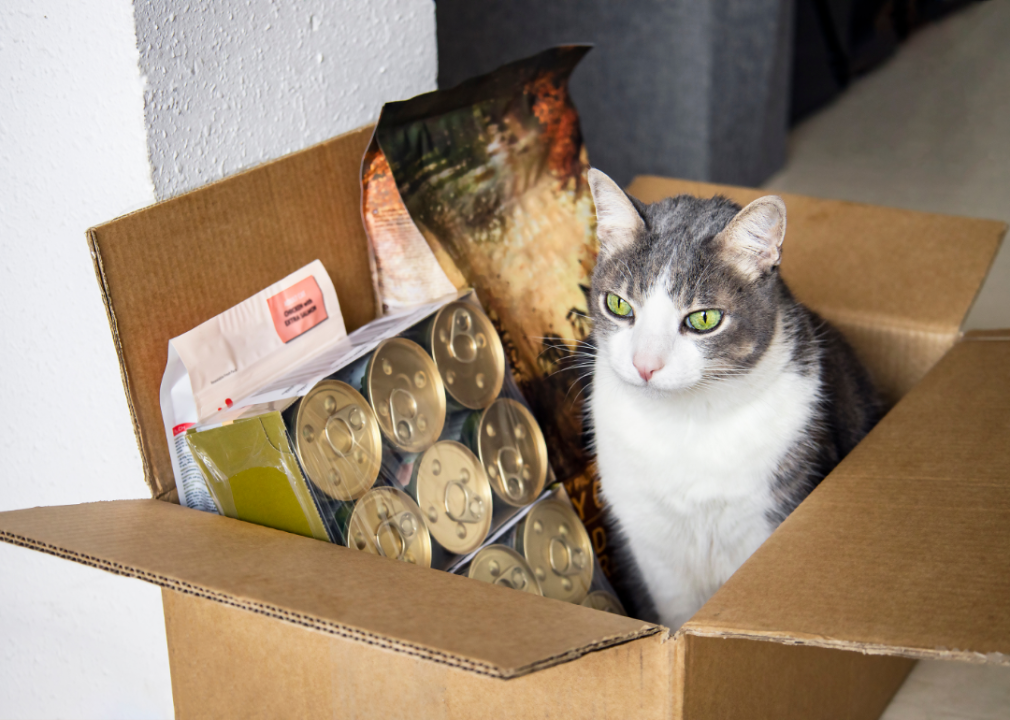How the pandemic revived the subscription box industry
Canva
How the pandemic revived the subscription box industry
The subscription box craze isn’t anything new, but the COVID-19 pandemic played a huge role in subscriptions experiencing a renaissance while many brick-and-mortar businesses struggled. Wicked Reports analyzed specific trends around subscription boxes and their broader economy to illustrate the pandemic impacted the industry.
Subscriptions rose in popularity largely due to convenience. In the depths of the U.S. lockdowns that began in March 2020, many people turned to online purchasing so they could shop safely at home. Subscriptions weren’t limited to just foods and household items. There were major gains in beauty, personal care boxes, and pet supplies, as well. Streaming services also saw a huge surge in subscriptions during the pandemic, for the first time passing 1 billion subscribers worldwide.
Subscription boxes are also known as replenishment services, and usually consist of multiple products, either selected by the customer or curated by the service itself (particularly in the case of niche products). The items are shipped to customers on a regular schedule. Customers sign up for such services for a variety of reasons, including getting a dependable source of specific products they regularly use, such as fresh veggies or groceries, or trying out different items from their favorite brands, or testing out products they haven’t tried, which often come as “surprise items” in their box.
A July 2021 customer insights survey conducted by manufacturing firm Jabil found that 79% of consumers expressed interest in auto-replenishment services, following a growing trend that had already seen gains among consumers the previous year. Household staples such as food, personal care, and pet supplies were the biggest draws, and the results further found that popularity for subscription box services is directly correlated to both income level and geographic residence, with urban centers having a higher pattern of subscribers.
Subscription services didn’t always receive such huge gains. In 2010, when subscription box services began taking off with pioneering offerings from Birchbox and Blue Apron, companies struggled to keep subscribed customers. Consumers expected that such services were a way to save both time and money and many found subscription boxes to be expensive. Consequently, companies early to the subscription service model had to restrategize and find alternate ways to appeal to customers.
The change in consumer perception and preference in the last decade has turned the tide on subscription box popularity. Continue reading to learn how the pandemic in particular has revived the subscription box industry.
![]()

Canva
Reliance on delivery created a foundation for subscription services
Since the onset of the pandemic, U.S. consumers have been purchasing groceries online more than ever. A recent Statista breakdown found that Walmart, Amazon, and food delivery service Instacart combined accounted for more than 65% of all online food and beverage sales as of March 2021.
Grocery delivery and pickup at this time accounted for $7.1 billion in overall sales, a number that took a slight dip in subsequent months as certain areas of the country eased safety restrictions, but as of October of last year that market was still worth $6.4 billion. Subscription services allow companies to benefit from recurring revenue while providing customers predictable delivery services, putting consumers in control of selecting their own products and delivery schedule.
For direct-to-consumer brands, the predictability of customer subscriptions helped strategic business decision-making regarding methods for maximizing monthly growth and reinforcing brand loyalty. For consumers, having a subscription allowed for the consistent replenishment of items on a monthly basis and helped consumers save time. And in light of the pandemic, many customers preferred staying at home instead of having to physically go into a store.

Canva
Shutdowns and COVID-19 transmission fears made e-commerce a necessity
At the start of the pandemic, when social distancing measures were strictly enforced, many people turned to e-commerce as an alternative to shopping in person. It was also a way to regulate their spending. The accelerated shift to online shopping during the pandemic presented an opportunity for companies to boost online revenue, but this change in consumers’ buying behavior also required companies to very quickly devise new approaches to their online strategies.
As a result, companies such as Amazon and Walmart, which own the lion’s share of retail e-commerce dollars, along with more niche retailers such as home decor store Wayfair and pet supply brand Chewy, began to offer subscription box services. This strategy allowed consumers to safely stock up on supplies and, in the case of curated boxes, mimicked the experience of physical shopping. Overall retail e-commerce revenue made the success of such pivots clear—rising to an estimated $768 billion in 2021 (against $644 billion in 2020).

Iryna Imago // Shutterstock
Subscriptions offered something reliable to look forward to during a period of unpredictability
A 2022 study published in The Lancet found that instances of depression and depressive symptoms rose an alarming 24.3% in 2021 as compared with pre-pandemic levels. Isolation and concerns for self-care and wellness bloomed as stay-at-home orders and general closures cut people off from many integral aspects of life. To this regard, subscription box services played an interesting and unexpected role.
The dependability and regularity of these services were such that people had something consistent to look forward to—something that also provided things they needed to get by. Whether it was a favorite brand of sauce to have for dinner that evening or a subscription box filled with curated surprise goods and products, consumers were able to offset boredom and feelings of isolation, and create some sense of excitement in trying times. Moreover, a renewed interest in crafts and personal projects propelled the growth of specialty craft boxes that served as a productive family activity to keep busy at home.

Canva
The pandemic inspired an increased focus on self-care
As the reported cases of depression and elevated depressive symptoms makes clear, the COVID-19 pandemic had profound impact on people’s mental health. It also raised awareness of the importance of self-care.
With a majority of people spending more time at home, health and fitness have become a priority. A June 2021 survey found that 80% of Americans are focusing more on their health since the pandemic started, and 73% have said their self-care has shown a notable improvement. As people began to see the value of “me time” and self-care overall as a necessity rather than a luxury, they also began to invest in services that fulfill these needs. The beauty and personal care and health and wellness segments each saw an approximate 20% growth in average order value among shoppers between 2019 and 2020.

Canva
More than two-thirds of people are now buying household staples through subscription services
Online shopping for home essentials—everything from groceries to pet food—soared during the pandemic, which accelerated growth for subscription services. A 2021 consumer insights survey shows that 68% of people used subscription services for household staple items such as food and beverages, home care, and personal care.
At the height of the pandemic, consumers found subscription services to be reliable and convenient, especially with the shift to more at-home dining. For businesses that sought out more stability in times of uncertainty, subscription services offered the opportunity to provide recurring revenue. Subscriptions for pet supplies also increased with close to 80% of pet owners utilizing subscription services for purchases.
In addition, one of the most generally telling stats regarding consumer propensity to use subscription services is the fact that survey respondents who indicated they did not use them at all dropped from 54% in 2020 to 32% in 2021.
This story originally appeared on Wicked Reports
and was produced and distributed in partnership with Stacker Studio.
